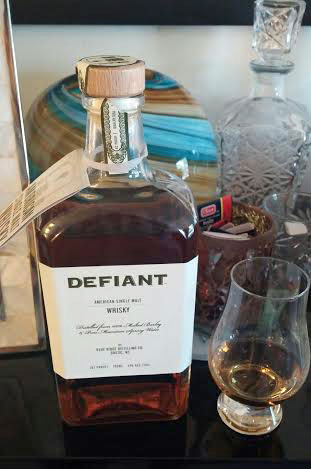How Much Whiskey Can You Drink Before Driving (Colorado)

Being pulled over by а cop for DUI is frightening. Stressful. For anyone. You’ll feel scared and overwhelmed. Even more, most of us don’t know what to do in situations like these. You won’t think straight. You could even do or say things you wouldn’t if you were thinking straight. Five minutes later, you’re arrested and charged with DUI (Driving Under Influence). What now?
Determining how much whiskey can you drink before driving isn’t an easy question at all. It’s hard to accurately predict how much whiskey is too much. Numerous factors enter into the equation:
- Gender
- Weight
- Drinking speed
- Food eaten
Still, it’s possible to explore how much whiskey you can drink before driving. In this post, we’ll do just that. Share the legal limits for drunk driving and how they can help you decide when to stop drinking before DUI ensures.
Legal Levels of Blood Alcohol Content (BAC)
In Colorado and other states, the legal blood alcohol content for DUI is 0,08%. That means if you’re pulled over while driving with a 0,08% BAC or more, you should think about calling your DUI defense attorney since the cops will charge you for driving under influence.
BAC and DUI
Simply put, driving with a BAC of 0,08% is instantly unlawful. Colorado’s prosecutor is able to prosecute any driver with DUI if they had a BAC of 0,08% or more. Even if you were driving carefully and felt no impairment.
Even if your BAC was less than 0,08%, the prosecutor can still charge you with DUI. The prosecutor would just need to show that you were notably not able to safely drive a car. Cameras, eyewitnesses, and the results of roadside sobriety tests (like horizontal gaze nystagmus) can prove this.
BAC and DWAI
DWAI stands for driving while ability impaired from drugs or alcohol. When your BAC is between 0,05% and 0,08% when driving, the prosecutor can charge you for DWAI. Even though you looked safe and sober, you can still be charged for DWAI. The Colorado prosecutor would only have to prove that drugs and/or alcohol influenced your driving to “the smallest degree”.
BAC and UDD
UDD or underage drinking and driving stands for driving with a BAC between 0,02% and 0,05% while under the age of 21. Since this is a quite low BAC, even minuscule amounts of alcohol can make you have a BAC of 0,02%.
For UDD, the prosecutor doesn’t have to prove that the defendant was impaired at all. The state will convict you for UDD if you just exceed the allowed BAC. UDD is also known as “baby DUI” and is a part of Colorado’s zero-tolerance policy for intoxicated minors.
BAC and Commercial Driving
Commercial driving with a BAC of 0,04% can land you an excess BAC CDL charge. Even if the prosecutor didn’t charge you for a DUI, Colorado DMV can still suspend your commercial driving license for a year. They can increase your revocation period by three years if you were transferring hazardous goods.
If you’re a commercial driver and a minor, you have to follow an even higher standard. If your BAC was 0,02%-0,04% while driving, they can charge you with excess BAC underage CDL. For the first offense, you’ll get a CDL suspension of three months. For the second offense, you’ll get a CDL suspension of six months. The third offense will land you a whole year suspension of CDL.
BAC and Whiskey
How can we approximately calculate BAC for whiskey? Well, a woman with 120 pounds can reach a BAC of 0,08% with just two shots of whiskey. On the other hand, a man with 180 pounds will reach a BAC of 0,08% after four shots of whiskey.
Keep in mind that such numbers are only an approximation though. Alcohol influences every individual differently. Some can push the BAC limit only after a single shot of whiskey. It all depends on:
- Bodyweight
- Alcohol tolerance
- Drinking speed
- Foods eaten
- Constitution
But why 0,08% BAC? Well, at that level, your driving is so much impaired that you’re 11 times more likely to crash your vehicle than if you weren’t drinking at all. Even though the BAC of 0,08% is the legal threshold, decades of research showed alcohol impairment starts for both men and women only after a single shot of whiskey. Is that shot of whiskey really worth getting into a crash or DUI charge?
What Happens When I Drink?
Some of the usual physiological effects you can expect at different BAC levels include:
- 0,02% — the legal threshold for the underage driver. If you drink rarely or moderately, you’ll feel some influence.
- 0,04% — here, you’ll feel relaxed and your inhibitions are lower than usual.
- 0,06% — here, your judgment is impaired. Don’t make important decisions.
- 0,08% — the legal intoxication threshold. If you drive, you’ll get charged and arrested. The driving skills and motor coordination are way lower than usual.
- 0,1% — here, your reflexes are quite low. Your reaction time is nowhere near normal. If you drive, you are definitely a danger to yourself and others.
- 0,12% — Unless you drink regularly and have incredible alcohol tolerance, you’ll vomit and feel sick.
- 0,14% — At this level, your balance is significantly impaired. You’ll hardly be able to spin without vomiting.
- 0,14-0,24% — the level of blackouts, or passing outs.
- 0,3% — here, you’ll likely need medical aid. Most folks become unconscious.
- 0,4% — very rare people can hold this BAC level without passing out. Some die.
- Over 0,4% — fatal BAC level. Alcohol overdose. Your breathing will stop.
Ways to Challenge Your BAC Results
There are numerous ways you can challenge your BAC results. Ensure you have a lawyer for any of them. You’ll hardly be able to properly present yourself at court unless that’s your job. Some of the most common ways of contesting BAC results in DUIs include:
- The technicians who maintained the breathalyzer lost their certificates.
- The police officers didn’t oversee you for 15 minutes before you took the chemical test.
- The police officer’s breathalyzer wasn’t properly calibrated.
- Your blood samples have been contaminated.
- You suffer from acid reflux, GERD, or auto-brewery syndrome. All of them can create higher BAC results.
- You had dental works that influenced any alcohol to pool and created higher BAC results.
- You had taken medications or mouthwashes that have alcohol.
- Your blood samples were mixed with anothers.
- The police officers haven’t administered an alcohol chemical test within two hours of your driving.
Conclusion
It’s not easy to determine how much whiskey you can drink before driving. If you wanna err on the safe side, two shots are the maximum limit if you’re a man. On the other hand, women with less body weight are safe for up to one shot of whiskey. Keep in mind that other factors can influence this. For example, your tolerance to alcohol and if you’ve eaten before drinking.
* Editor’s Note: This article is opinion, and The Whiskey Reviewer does not endorse driving after drinking.






Just don’t drink and drive, don’t even think about it